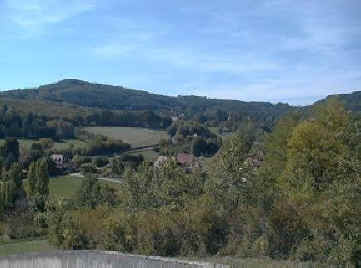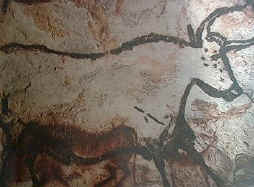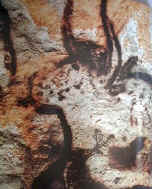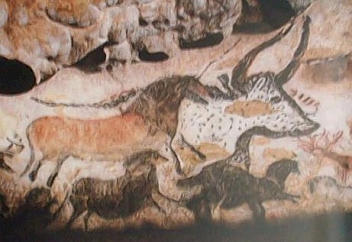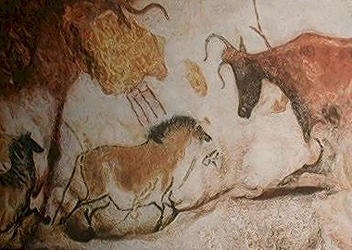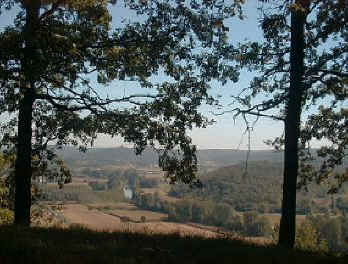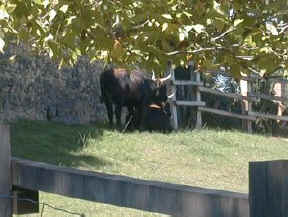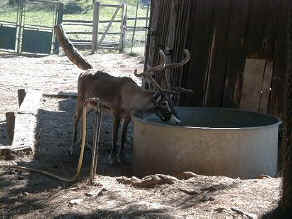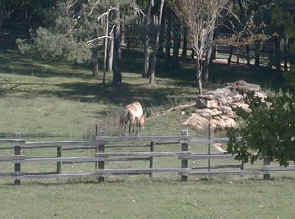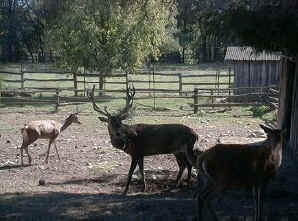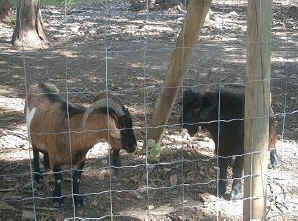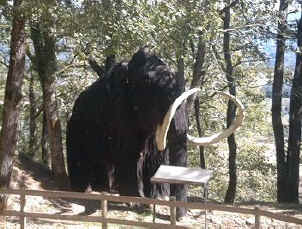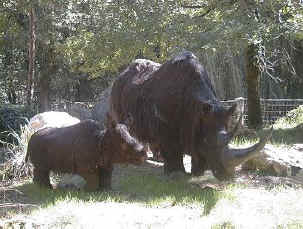Lascaux(pronounced: Lass - co)
The Vezere River Valley near Lascaux Art from 17,000 years ago...Imagine that time span. This work is from the Upper Paleolithic period (during the "ancient" or "chipped" Stone Age). The cave at Lascaux, near the town of Montignac on the Vezere River, was discovered in 1940 by a group of boys. When the abbot Breuil saw the drawings, he uttered the phrase "Lascaux, the Sistine Chapel of Prehisotry". The original site was open to the public between 1948 and 1963, but had to be closed because of the damage brought on by the great influx of tourists...two problems: green algae was forming on the drawings and a white calcium deposit was beginning to glaze over them. To save the original artwork while, at the same time, satisfying the public's desire to witness this prehistoric treasure, the Lascaux II project was immediately begun. Lascaux II is an exact duplicate of the original cave. The reproduction was completed in 1983. (It is awesome...we really had the feeling of being in the actual cave!). As a budding artist, I was thoroughly impressed with the style...the legs farthest from the viewer were separated from the body, giving a sense of dimension and distance...the viewer could almost feel the motion of the animals. The pigments were reds, ochres (both yellow and brown) and blacks.
Thot(pronounced: toe)
The Vezere Valley (from Le Thot) Several miles south of Montignac, we found Le Thot, an animal park with living replicas of the animals present during the Lascaux period. The live animals included aurocks, reindeer, deer, "chinese" horses, bison and goats. There were even reproductions of the wooly mammoth and wooly rhinoceros. This exhibit helped us visualize some of the animals portrayed in the Lascaux drawings.
|
